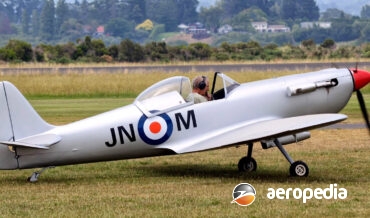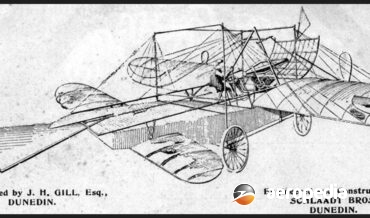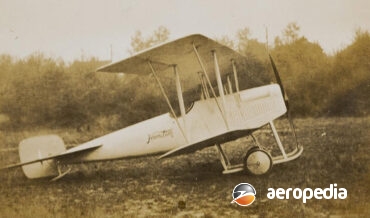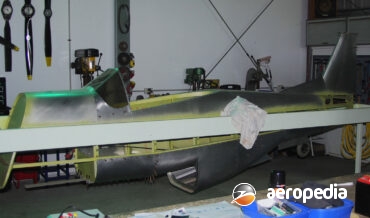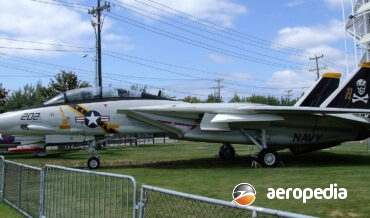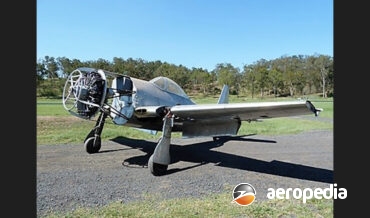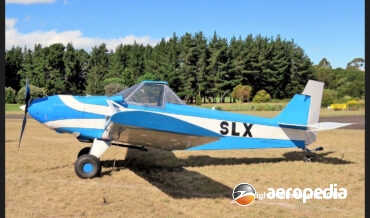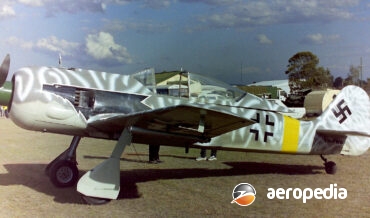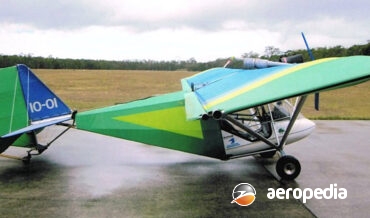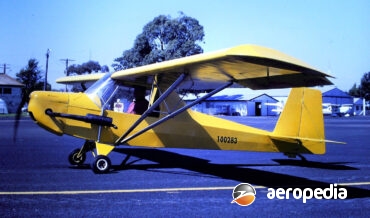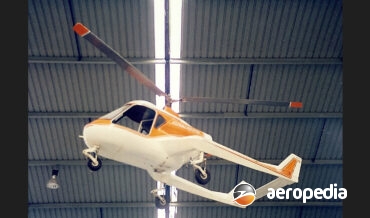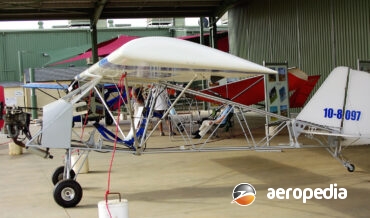All Contents
Contents
Little is known about this aircraft but it was designed and built by the late Ole Hartmann and, fitted with a Rotax 503 engine, it became 19-3746 (c/n 1) under RAA regulations.
David C. Eyre
- May 25, 2020
This was an ultralight aircraft known as the Jenner Gippslander Mk 1 and was registered with the RAA on 28 August 1995 and was withdrawn from use on 25 May 2008.
David C. Eyre
- May 25, 2020
This is an amateur designed and built aircraft which resembles a Supermarine Spitfire in looks and is powered by an ultralight engine.
David C. Eyre
- May 25, 2020
John Harley Gill of Dunedin, NZ, designed and built an aircraft in about 1909, work commencing at about that time in the foundry of Schlaadt Bros in Cumberland Street.
David C. Eyre
- May 25, 2020
A Hamilton biplane was flown by Messrs Seaforth and MacKenzie out of a paddock at Martin, NZ in 1913, this being the first flight by a heavier than air machine in the Manawatu area.
David C. Eyre
- May 25, 2020
This was a light aircraft designed by G A Gerber, the plans of which were released in the magazine Science and Invention in the July 1929 edition.
David C. Eyre
- May 25, 2020
Australian philanthropist, Sir Edward Hallstrom, based in Sydney, was well known, amongst other things, for the design, development, production and marketing of the Hallstrom series of refrigerators, which became a by-word for efficiency at the time.
David C. Eyre
- May 25, 2020
This light aircraft was designed and built by Bryan Gabriel at Holbrook, NSW. It is an approximately 70-percent scale model of a North American P-51D Mustang built of all metal construction and fitted with a converted Mercury six-cylinder Vee outboard engine.
David C. Eyre
- May 25, 2020
The F-14 Tomcat for many years was one of the most potent interceptor / fighters in the armoury of the US Navy and saw combat on a number of occasions operating from aircraft carriers of the US Fleet.
David C. Eyre
- May 25, 2020
This was a one-off homebuilt gyrocopter built around the cockpit section of a Robinson R-22. The machine is fitted with a tricycle undercarriage and was fitted with a Subaru EJ25 engine driving in a pusher configuration behind the cockpit, being fitted with a three-blade Ivo 1.93 m (76-inch) propeller.
David C. Eyre
- May 25, 2020
Work on an 80% scale all alloy scale replica of the Grumman F-8 Bearcat was commenced in Western Australia in about 2010, the aircraft to be fitted with a new 269-kw (360-hp) Vedeneyev M-14P radial engine driving a four-blade MT propeller.
David C. Eyre
- May 25, 2020
Mr Gavin Grimmer of Hastings, NZ built and flew a Canadian designed Falconar Maranda which in 1995 became ZK-JGR.
David C. Eyre
- May 25, 2020
The Mosquito was an ultralight designed and built in Australia for the local market. It was powered by a 16.4 kw (22-hp) Skylark engine.
David C. Eyre
- May 25, 2020
This aircraft was registered on 5 March 2013 as VH-NZG³ (c/n 2009-1). It was built by Robert Grigson of Strathfieldsaye, Vic. and is fitted with an Aero Sport Power IO-375-M1B engine driving a Whirlwind Aviation 200RV propeller.
David C. Eyre
- May 25, 2020
The Hi Jack is another ultralight built for the Australian market. Power plant was the popular at the time 16.4 kw (22-hp) Skylark engine.
David C. Eyre
- May 25, 2020
Terrence Kronk over the years, before his tragic loss in an aircraft crash, was involved in the construction of a number of scale replicas of aircraft, and these included a Spitfire Mk 26 , North American P-51 Mustang and a Fw-190A.
David C. Eyre
- May 25, 2020
The Joey was probably one of the first powered gliders in Australasia, and was designed and built in Australia by Keith Jarvis of South Australia and placed in production.
David C. Eyre
- May 25, 2020
This aircraft was designed and built by the late Joseph Kostecv and it was powered by a 21-kw (28-hp) Konig four-cylinder radial engine.
David C. Eyre
- May 25, 2020
In May 2003 Mr Lance Watson gave evidence to the Australian House of Representatives Transport and Regional Services Committee of a proposal by his Company to develop an aircraft able to serve remote communities at ‘bus fare prices’.
David C. Eyre
- May 25, 2020
This was a further light aircraft designed and built by the late Joseph Kostecv, this being a 75% scale Piper J-2 powered by a Konig engine.
David C. Eyre
- May 25, 2020
The Hummingbird is a high-performance gyrocopter designed and built in Brazil at Joinville, which is between Florianopolis and Curitaba on the south Brazilian coastline.
David C. Eyre
- May 25, 2020
This aircraft was a homebuilt light aircraft built in a terrace house at Redfern in Sydney before World War II. A press report in the Daily Telegraph from April 1910 described it as the “First Australian-Built Aeroplane”.
David C. Eyre
- May 25, 2020
The TH1 is a single-seat light aircraft built at Leom, New Zealand, in the 1980s. It was one of the first indigenous-designed light aircraft to be completed in New Zealand and is said to be based on the design of the North American P-51 Mustang.
David C. Eyre
- May 25, 2020
Following the announcement of Henry Kremer in the United Kingdom inviting interested parties to design and build an aircraft to make the first successful flight of a man powered aircraft.
David C. Eyre
- May 25, 2020
This aircraft was noted at an air-show at Aero Pelican, Belmont, NSW in September 1964. The machine was unfinished and was said to have been submitted to the Army Inventions Commission in 1943.
David C. Eyre
- May 25, 2020
The Kermit was a single-seat ultra-light aircraft designed and built in Australia and made its first flight in 1999. It was fitted with a Rotax 503 engine driving a Sweetapple two-blade propeller.
David C. Eyre
- May 25, 2020
Very little is known about this aircraft. It was first registered with Recreation Aviation Australia on 4 December 2008 but nothing further is known about it.
David C. Eyre
- May 25, 2020
Peter Jones of Tauranga, NZ in 2011 – 12 built a single-seat low-wing monoplane said to be based on a 1950s design from India known as the Monsoon.
David C. Eyre
- May 25, 2020
Little is known about this aircraft. It is a scaled down Piper J-3 Cub designed and built by the owner and is a single-seater and is painted overall yellow and is powered by a Rotax 277 engine.
David C. Eyre
- May 25, 2020
Mr Jones was the lecturer in charge at the East Sydney Technical College when classes were held in the 1930s in relation to aircraft design and construction and he himself was involved in the design and construction of a number of aircraft of his own design, and with the assistance
David C. Eyre
- May 25, 2020
In July 1988 it was announced a Swedish inventor of the World’s first cardboard aircraft “which is also radar-proof and fire-resistant”, was setting up business in Australia.
David C. Eyre
- May 25, 2020
Early in the 20th century Mr A W Jones went to England and obtained his pilot’s licence. On his return in 1913 he imported a Caudron G.II fitted with a 26-kw (35-hp) to 30-kw (40-hp) Anzani engine.
David C. Eyre
- May 25, 2020
This was a one-off single-seat parasol wing aircraft painted light blue with dark blue trim which became 10-1887 (c/n 1) under RAA regulations.
David C. Eyre
- May 25, 2020
This was an ultra-light aircraft which was registered with the RAA as 10-1477 and was registered from 22 September 1995 until 16 January 1999 when it was retired.
David C. Eyre
- May 25, 2020
Little is known about this ultralight aircraft but one is known to have been involved in an accident near Yeppoon Qld on 6 April 1985.
David C. Eyre
- May 25, 2020
Mr John Lowther in New Zealand designed and built a 75% scale replica of a Sopwith F.1 Camel, this being the second aircraft he had designed himself and the ninth light aircraft he had built.
David C. Eyre
- May 25, 2020
Mr A McMullen of Fremantle, WA built an aircraft named The Boomerang of his own design. On 12 January 1911 Joseph Hammond examined the machine and said it showed great promise, that it will maintain its poise or equilibrium automatically.
David C. Eyre
- May 25, 2020
Mr C Lindsay-Campbell designed and built an aircraft described as an aero-marine monoplane.
David C. Eyre
- May 25, 2020
Very little is known about this machine other than it was a single-seat gyrocopter of fibreglass construction with a three blade rotor and fitted with a tricycle undercarriage and twin booms carrying the tail.
David C. Eyre
- May 25, 2020
The PB-5 is a single-seat high wing ultralight aircraft fitted with a tractor engine and built of steel tube with fabric covering.
David C. Eyre
- May 25, 2020
Recent Comments
Archives
Categories
- No categories
Categories
- No categories
Latest Posts
Newsletter


